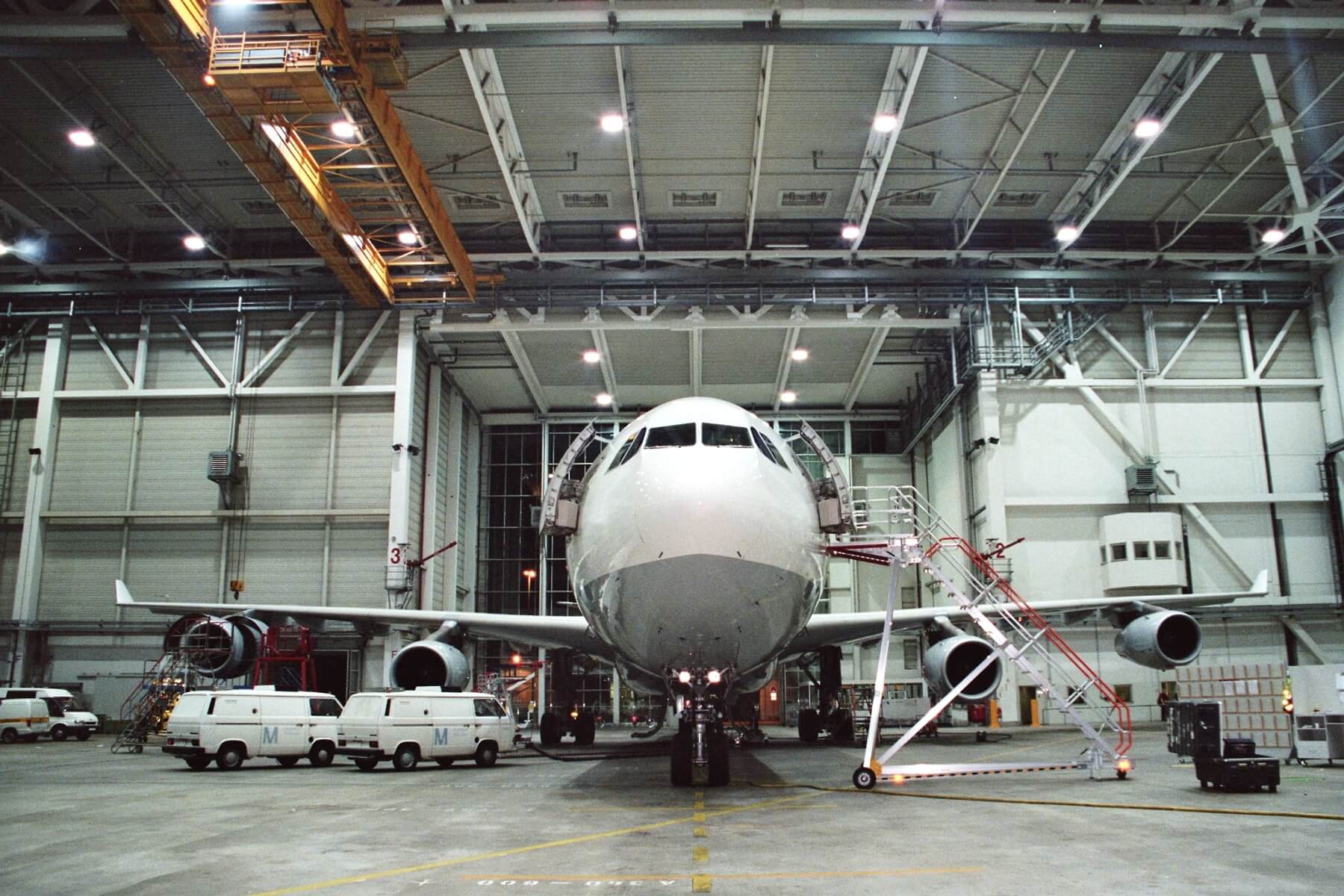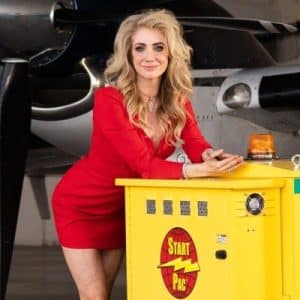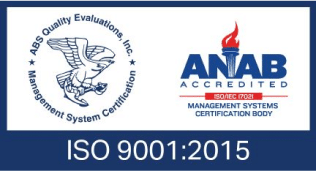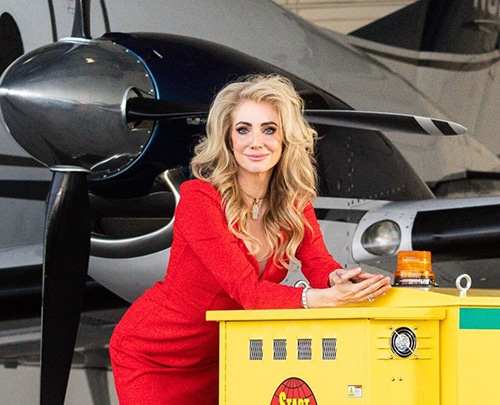
How Often Do Airplanes Get Maintenance?
Commercial airplanes are marvels of engineering, designed to fly thousands of miles at high speeds with tens, or even hundreds, of passengers on board. To ensure the safety and reliability of these aircraft, routine maintenance is crucial. But how often do airplanes get maintenance? This article will explore the frequency and extent of maintenance checks for airplanes, the components that are inspected, and the regulatory requirements that govern these procedures.
Routine Checks Based on Flight Hours or Cycles
Routine checks based on flight hours or cycles are a critical aspect of plane maintenance and will also determine how often airplanes are inspected depending on specific conditions. Let’s take a closer look:
Light General Aviation Aircraft
When it comes to light general aviation aircraft, routine checks are essential for detecting any potential issues before they escalate into serious problems.
- Frequency of Routine Checks: Maintenance checks for light general aviation aircraft are typically carried out every 50 to 100 flight hours. During these inspections, various components are carefully examined and tested to ensure their proper functioning.
- Specific Components Checked: In addition to the regular maintenance checks, there are specific tasks that are performed based on the number of flight cycles. Flight cycles refer to the takeoff and landing of an aircraft. These cycles stress different parts of the aircraft, such as the landing gear and control surfaces.
During these flight-cycle-based checks, technicians pay close attention to the landing gear. They inspect the tires for wear and tear, check the hydraulic systems for leaks, and examine the shock absorbers for any signs of damage. The control surfaces, including the ailerons, elevators, and rudder, are thoroughly inspected for proper alignment and functionality.
Furthermore, routine checks for general aviation aircraft also involve inspecting the engine and its components. Technicians carefully examine the engine oil and filters, ensuring that they are clean and free from contaminants. They also check the spark plugs, ignition systems, and fuel lines to ensure optimal performance and prevent any potential issues that could arise during flight.
Commercial Aircraft
On the other hand, in commercial aircraft, routine checks have a different approach but are equally essential. Let’s take a closer look:
- More Frequent Checks: These routine checks for commercial aircraft are conducted more frequently, often every few hundred flight hours. These checks are more extensive to account for the higher operational demands placed on these planes. Engineers meticulously inspect critical systems, including the engines, avionics, landing gear, and control surfaces.
During these comprehensive checks, engineers use advanced diagnostic tools and equipment to assess the condition of the engines. They analyze the engine performance data, monitor the exhaust gas temperature, and inspect the turbine blades for any signs of erosion or damage. These detailed inspections help ensure that the engines are operating within the specified parameters and are capable of delivering the required thrust.
In addition to the engines, avionics systems are also thoroughly inspected during routine checks. Avionics encompass a wide range of electronic systems, including communication, navigation, and flight control systems. Technicians meticulously check the wiring, connectors, and circuit boards to ensure that all components are functioning correctly. They also update the software and firmware to the latest versions to enhance the aircraft’s overall performance and safety.
- Extensive Inspection Procedures: In addition to routine checks, commercial airplanes undergo more comprehensive inspections to ensure their continued airworthiness. These major inspections and overhauls take place at predetermined intervals, typically every few years. During these inspections, the aircraft is thoroughly examined, and components are replaced as necessary according to established guidelines.
One critical aspect of these extensive inspections is the examination of the aircraft’s structure. Highly trained inspectors carefully inspect the fuselage, wings, and tail section for any signs of corrosion, stress fractures, or other structural abnormalities. They use advanced non-destructive testing techniques, such as ultrasound and X-rays, to identify hidden defects that may not be visible to the naked eye.
In addition to the structural and system inspections, the check team also focuses on the aircraft’s components. This includes the landing gear, engines, and control surfaces. Landing gear undergoes a thorough examination, with technicians checking for any signs of wear, corrosion, or hydraulic leaks. Engines are inspected for any abnormalities, such as oil leaks or worn-out parts, and necessary repairs or replacements are made to ensure optimal engine performance. At this point, we have evidence that answering the question of how often airplanes get maintenance is not an easy task as it depends on many influencing factors.
Major Inspections and Overhauls
Major inspections and overhauls are pivotal elements in the world of plane maintenance. During these major inspections, every facet of the aircraft is meticulously examined, from its engines and avionics to its structural integrity. Should any issues or indications of wear and tear be detected, extensive repairs or component replacements are undertaken to restore the aircraft to peak performance. These procedures are absolutely essential for aviation safety and are tightly regulated by authorities to uphold rigorous maintenance standards.
Heavy Maintenance Checks
Heavy maintenance checks, often referred to as “C-checks” or “D-checks,” represent a specialized subset of major inspections. These checks are more extensive and time-consuming, requiring the aircraft to be taken out of service for an extended period of time. Heavy maintenance checks are typically scheduled after a specific number of flight cycles and encompass a thorough evaluation of the aircraft’s systems, components, and structures. During these checks, various parts are disassembled, meticulously inspected, and replaced as necessary.
- In-depth Examination and Component Replacement: In-depth examinations and component replacements constitute vital parts of routine checks based on flight hours or cycles. These examinations involve an exhaustive scrutiny of diverse aircraft components and systems, including engines, landing gear, and avionics. Skilled technicians and maintenance teams carefully assess the condition of these components, diligently seeking out signs of wear, corrosion, or damage. Whenever issues are identified, components are promptly replaced or repaired to uphold the aircraft’s reliability and safety standards. This proactive approach serves as a safeguard against unexpected failures during flight, reduces operational disruptions, and fundamentally contributes to the overall safety and efficiency of aviation operations.
Engine Overhauls
The engines, which are a vital part of an aircraft’s propulsion system, require regular maintenance and overhauls.
- Timing and Criteria: Engine overhauls are performed according to specific timing and criteria established by the engine manufacturer. It involves a comprehensive inspection of the engine components, the replacement of worn parts, and thorough testing to ensure optimal performance.
- Comprehensive Engine Maintenance: Skilled technicians meticulously examine various components, such as turbine blades, fuel systems, compressors, and exhaust systems. Any worn or damaged parts are promptly replaced, and necessary adjustments are made to guarantee peak performance.
Regulatory Requirements
Regulatory requirements are a fundamental component of the aviation industry, governing the standards and guidelines that ensure the safety, security, and compliance of aircraft operations.
Compliance with Aviation Authorities
Aviation authorities, such as the Federal Aviation Administration (FAA) and the European Union Aviation Safety Agency (EASA), establish regulations and standards that govern airplane maintenance. These regulatory bodies ensure that aircraft operators comply with safety requirements to ensure the safety of passengers and crew.
Maintenance Programs to Ensure Safety Standards
Maintenance programs are developed to comply with these regulations and to ensure that safety standards are consistently met. These programs outline the specific maintenance tasks, intervals, and procedures that must be followed to maintain airworthiness. They provide a comprehensive framework for managing and documenting maintenance activities to guarantee aircraft safety.
Technology Advancements Impacting Maintenance
Technological advancements have revolutionized airplane maintenance, making it more efficient, cost-effective, and reliable, which might help determine how often airplanes get maintenance very soon. Let’s see some important aspects of this:
Predictive Maintenance Systems
Predictive maintenance systems have been developed to monitor the health of various components and systems in real time. These systems use advanced sensors and analytics to detect anomalies and predict failures before they occur, allowing for proactive interventions.
Condition Monitoring for Proactive Interventions
Condition monitoring is another advanced technology that enables the ongoing assessment of critical systems. It involves the regular collection and analysis of data from various sensors installed throughout the aircraft. By continuously monitoring the performance of key components, condition monitoring allows for early detection of potential issues and facilitates timely maintenance and repairs.
Emergency Maintenance and Unscheduled Checks
Despite meticulous planning, unforeseen circumstances can arise during an aircraft’s operation, requiring emergency maintenance, unscheduled checks, and changing the expectation regarding how often planes are inspected. These situations may arise following an abnormal event, such as a bird strike, severe weather conditions, or a system malfunction.
In such cases, the maintenance team swiftly investigates the issue, identifies the root cause, and performs the necessary repairs or inspections. These unscheduled checks ensure that the airplane remains in a safe and serviceable condition, ready for its next flight.
Environmental Factors Influencing Maintenance
Environmental factors play a significant role in aircraft maintenance. The conditions in which an aircraft operates, such as temperature, humidity, and exposure to pollutants, can have a direct impact on its components and systems:
Climate and Weather Impact
The climate and weather in which an aircraft operates can have a substantial impact on its maintenance needs. Harsh weather conditions, including extreme temperatures, heavy precipitation, and severe storms, can accelerate wear and corrosion on the aircraft’s exterior and internal components. Additionally, temperature fluctuations can lead to thermal stress, affecting materials and systems. Maintenance teams must closely monitor these climate-related factors and tailor their procedures to mitigate potential damage, ensuring that aircraft remain in optimal condition.
Corrosion Prevention Measures
Corrosion is a persistent threat in aviation, primarily due to exposure to moisture and environmental contaminants. To combat this issue, corrosion prevention measures are paramount. Protective coatings, regular inspections, and corrosion-resistant materials are employed to shield critical components from corrosion damage. Proper storage and maintenance practices, such as routine cleaning and sealing, also play a vital role in preventing corrosion. These proactive measures and an understanding of how often airplanes get maintenance are essential to extending the aircraft’s lifespan and maintaining its structural integrity.
To Recap
Regular and proactive maintenance is crucial to ensuring the airworthiness and reliability of airplanes. By adhering to established maintenance schedules, conducting thorough inspections, and embracing technological advancements, aircraft operators can uphold strict safety standards and ensure the seamless operation of any aviation service.
For companies involved in producing ground power units and power supplies for aviation, it becomes even more essential to prioritize maintenance practices. These ground power units play a vital role in providing a reliable power source to aircraft during ground operations, including pre-flight preparations and maintenance activities.
If you need high-quality ground power units and power supplies for your aviation operations, please don’t hesitate to contact us. Our experienced team is dedicated to providing top-notch products that meet industry standards, ensuring the efficiency and safety of your ground operations. Reach out to us today to discuss your requirements and explore how our solutions can enhance the performance and reliability of your aviation services.






